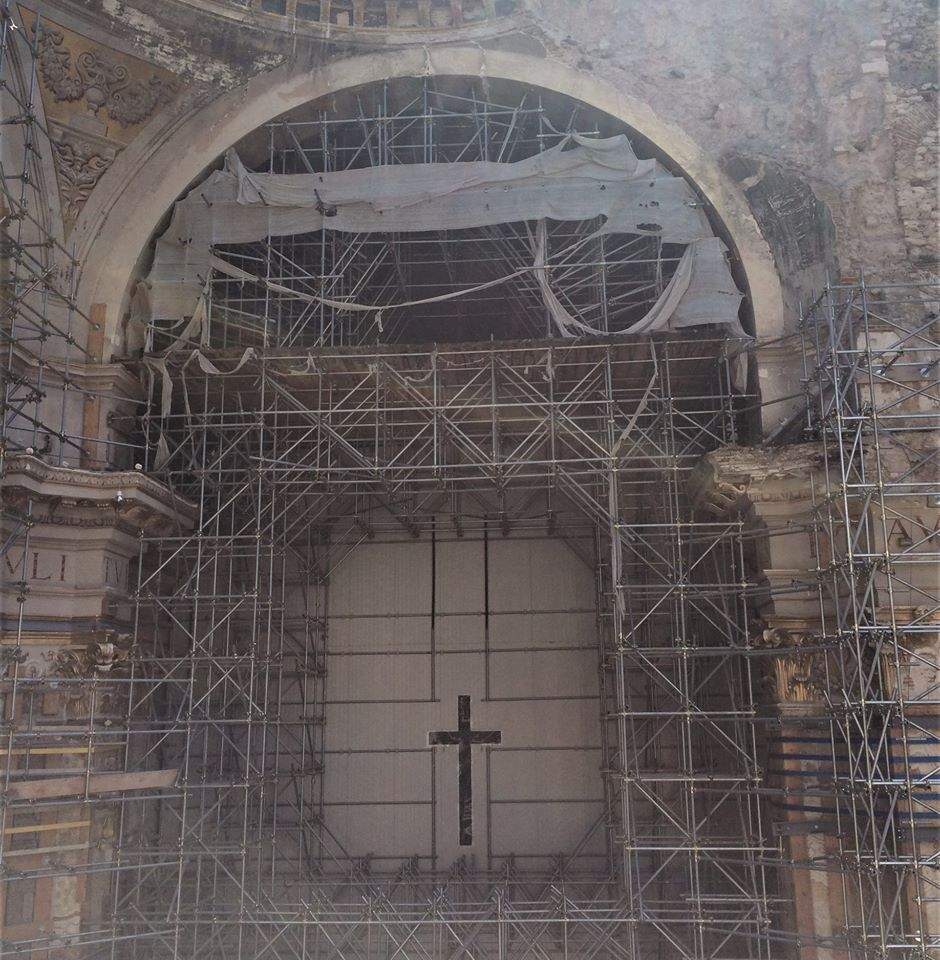L'Aquila, at last 11 years after the earthquake, reconstruction of the Cathedral can start: the Superintendence authorizes
At last, eleven years after the earthquake that devastated L’Aquila’s historic center in 2009, the reconstruction of the Cathedral of Saints Maximus and George, one of the most devastated buildings in the Abruzzo capital, can begin: it had been uninhabitable since that date, and no restoration project had begun since then. The cathedral is one of the city’s churches (along with San Marco, Santa Maria di Collegmaggio, Santa Maria del Suffragio and Santa Maria a Paganica) that suffered the total collapse of a portion of the transept roof and adjoining masonry, with serious consequences for the remaining structure of the aisles and major losses to the decorative apparatus underneath. Now, the act of authorizing the intervention project has been formally transmitted to the Regional Secretariat of the Ministry of Cultural Heritage for Abruzzo: reconstruction can therefore begin.
The Soprintendenza Archeologia, Belle Arti e Paesaggio (Archaeology, Fine Arts and Landscape Superintendence) for the city of L’Aquila and the municipalities in the crater area makes it known that the long time it took to start the project is due to the particular complexity of the monument and its context, combined with the highly compromising damage (and aggravated by the long elapsed time, as well as the stresses due to the subsequent seismic events of 2016 and 2017), which led to difficult design choices for reconstruction and restoration. Choices that required adequate preliminary investigations, and therefore necessitated a particularly careful and detailed course of technical inquiry.
In October 2018, in fact, after the first examination of the deposited project, the need to supplement the knowledge of the state of affairs with more in-depth analysis and documentation had been highlighted. Meanwhile, in April 2019, the Superintendence, in order to accelerate the assessment and allow a faster start of the next steps for the restoration of the church, has a decided to establish a permanent technical table, setting up an internal multidisciplinary commission (on the model of what has already been done for the adjacent Archbishopric complex). There, a periodic and constant confrontation with designers, owners and clients was guaranteed, in order to address in a unified and integrated way the different problems of a structural, architectural, archaeological and historical-artistic nature.
In the following fourteen months (thus to date), as many as 25 meetings (including meetings and technical inspections) have been held, addressing the main issues that have emerged, including the need for more extensive investigations for the knowledge of the historical-archaeological stratification of the site, the methods of overall consolidation and reconstruction of the collapsed part, the reintegration of the gaps in the decorative apparatuses (pictorial and plastic), and the plant engineering. It is precisely the archaeological investigations (which were not initially planned) that have confirmed the relevance of the stratification of the Cathedral’s subsoil, bringing to light burial spaces and portions of wall faces dating back to the original church and previously unknown. Further investigation will be necessary for some specific aspects (such as the recovery and reintegration of the most compromised decorative apparatuses) to be evaluated also during the subsequent construction phases.
As if this were not enough, the Covid-19 emergency then got in the way, which, however, did not cause major slowdowns, because the final phase of the preliminary investigation, between March and May, was nevertheless carried out despite the difficulties of managing the work, even resorting to modes of comparison and evaluation via telematics. All design adjustments and related insights were formalized with the final delivery of the project carried out at the end of May 2020. The final meeting of the Commission was held on Wednesday, June 17, and allowed the Superintendence to conclude the process and proceed to the formal issuance of the authorization, which can now allow the MIBACT Regional Secretariat, the contracting station, the next steps for the implementation of the intervention.
“Aware of the importance of giving a concrete and operational signal for the successful start of the restoration of the cathedral,” said Superintendent Alessandra Vittorini, “we decided to accompany this complex preliminary path with the establishment of a special internal multidisciplinary commission that could effectively dialogue on a technical and scientific level with the different components involved. The extent of the damage and the complexity of the proposed solutions required a systematic approach, which produced a greater punctualization of the entire project. It will be necessary to continue with the same attention in the subsequent construction phases. I would like to thank for their dedicated efforts all the Commission officials, who have worked intensively over the past two years. Thanks are also due to the designers, representatives of the property and the contracting station for their willingness to go down a shared path that has certainly provided an excellent basis for all the continuation of the work.”
 |
| L'Aquila, at last 11 years after the earthquake, reconstruction of the Cathedral can start: the Superintendence authorizes |
Warning: the translation into English of the original Italian article was created using automatic tools. We undertake to review all articles, but we do not guarantee the total absence of inaccuracies in the translation due to the program. You can find the original by clicking on the ITA button. If you find any mistake,please contact us.



























